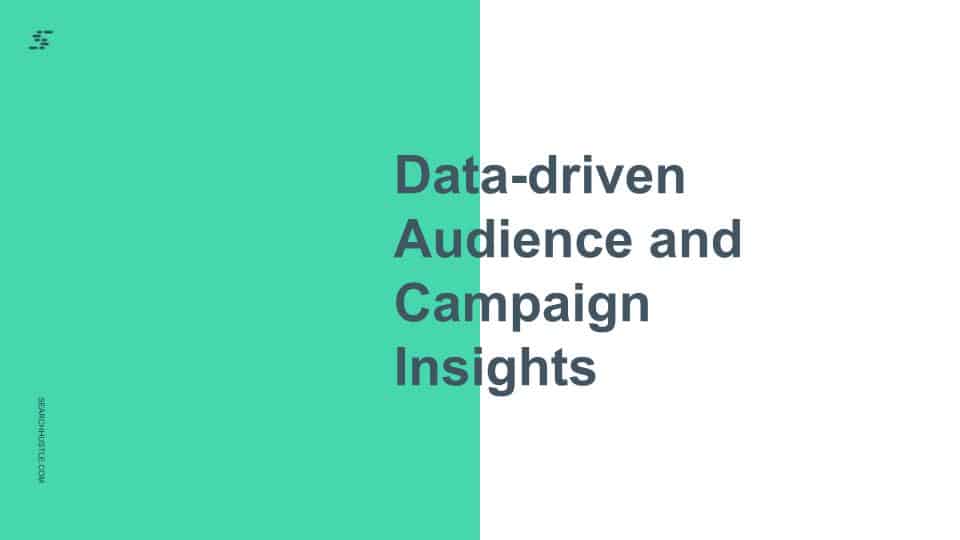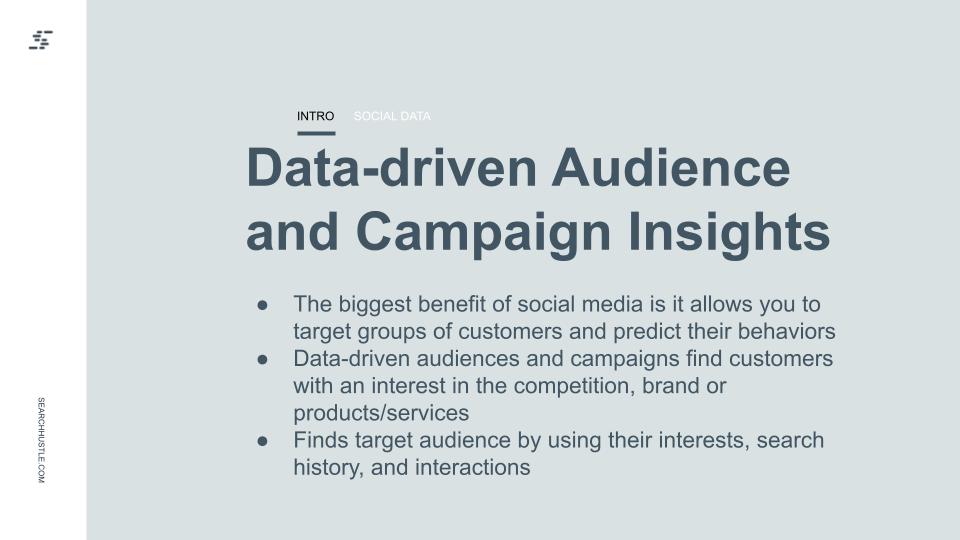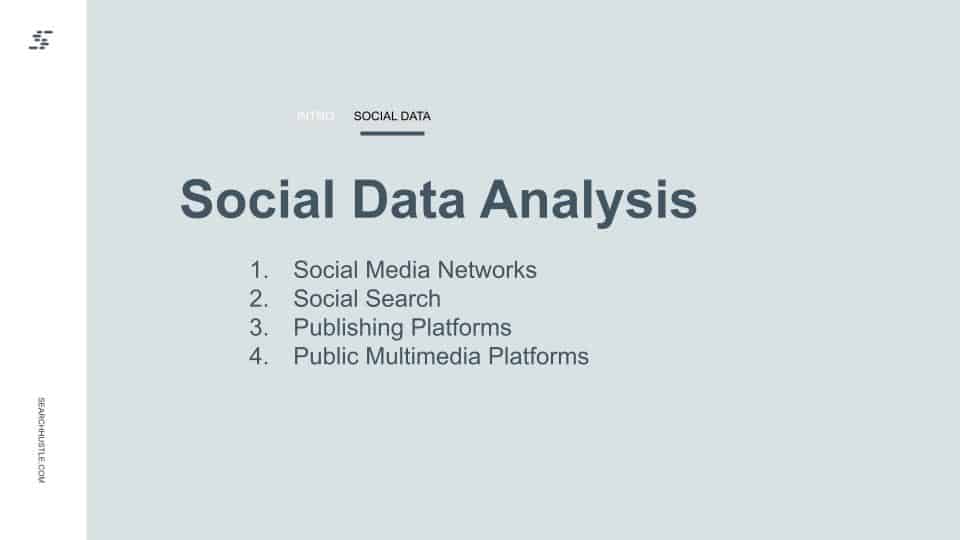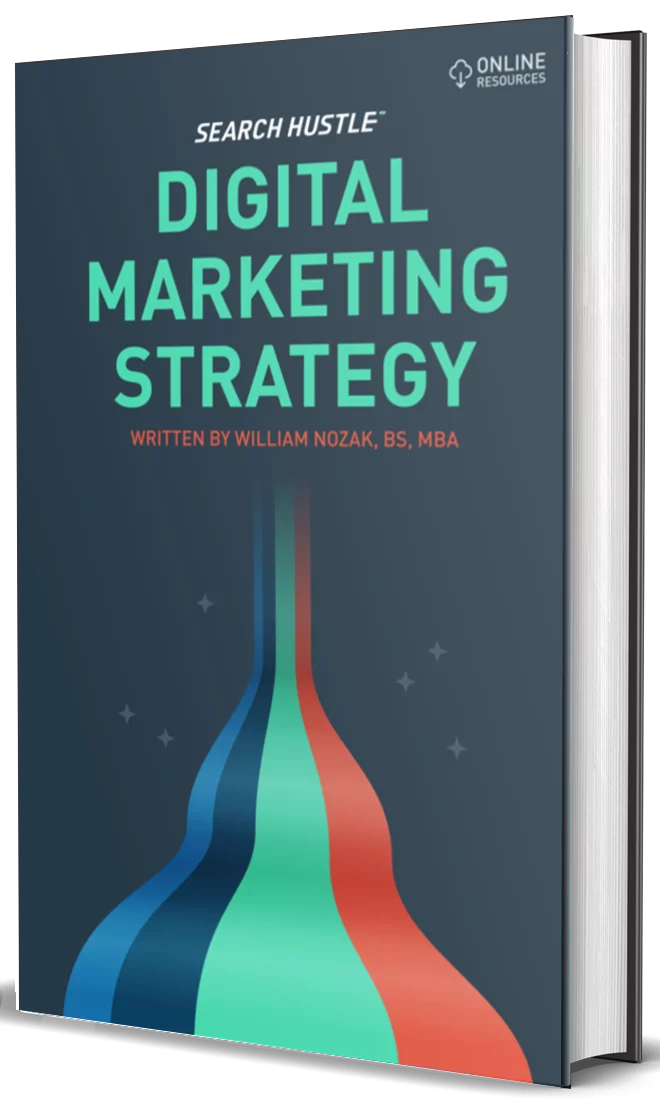Data-driven Audience and Campaign Insights
A significant advantage of social media is the ability to target groups of customers and predict their behaviors. Data-driven audiences and campaigns find customers with interest in brands and products by using their interests, search history, and interactions to better streamline the process.

Social Data
Social data is information about interactions people make. Whether you are trying to understand overall human behavior or tell a better story that connects with people, social data is a key component to inform all of these objectives. Social data is all about how people behave and interact in social contexts.
This is done by analyzing what type of posts people make or the tweets they most interact with. Data is also drawn from what people mark as their favorites or where and why they hit the like button on a particular video or post.

Social media networks: tweets, posts, favorites, likes, etc.
Keyword analysis should reveal what words people use to look for items and services. Hashtags are another great way to do this, as Twitter is famous for having hashtags create entire communities of like-minded individuals.
Discovering what keywords are being used and what hashtags are performing well can help isolate and identify groups that would be interested in specific products and services. Brands doing this bypass wasted efforts and can focus more directly on those they want as customers.
Social search: keyword analysis and hashtag tracking
In order to tailor advertisements and outreach, keyword analysis shows what words people use to look for items and services. Hashtags are another great way to do this, as Twitter is famous for having hashtags create entire communities of like-minded individuals.
Discovering what keywords are being used and what hashtags are performing well, can help to isolate and identify groups that would be interested in products and services. Brands doing this effectively bypass a lot of wasted effort, being able to focus more directly on those they want as customers.

Long-form publishing platforms: blogs, wikis, Yelp, etc.
Blogs and wikis that target a specific audience allow content to be delivered to those who are directly interested in products and services. It is also possible to reach new audiences or to directly analyze what specific audiences are looking for and how they perceive brands, products, or services.
Public multimedia content sharing platforms: YouTube, Flickr, etc.
A lot of information can be learned by analysis of multi-media content sharing. This is particularly useful with platforms like YouTube, Pinterest, and TikTok. These platforms rely on multimedia, not on large text posts in order to reach their audience. What type of videos and aesthetics customers are searching for can give a brand a great advantage in reaching them.

Ready to Take Your Search Hustle Further?



